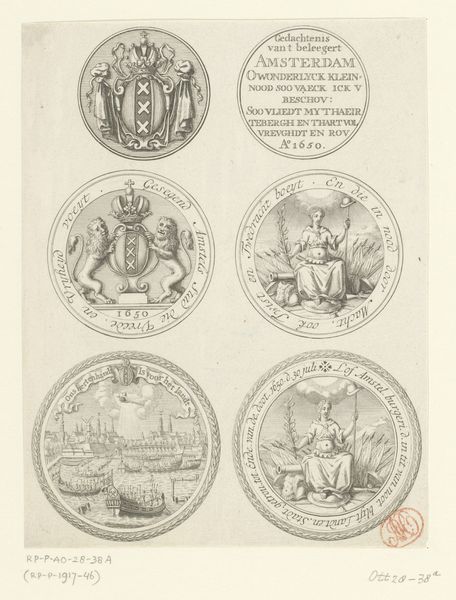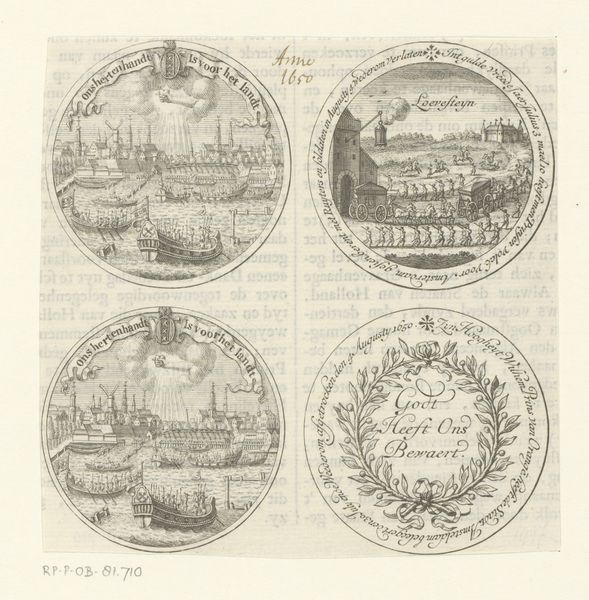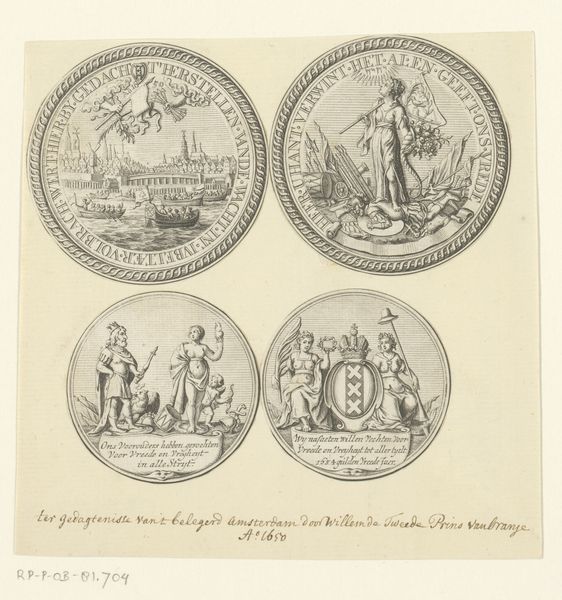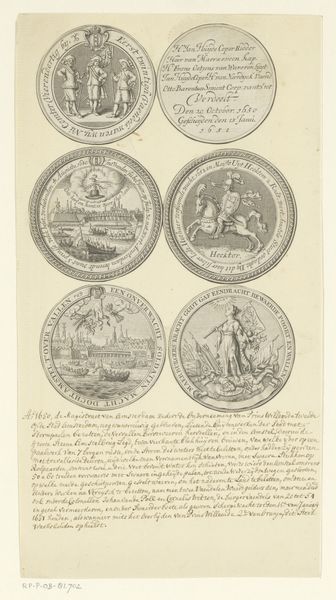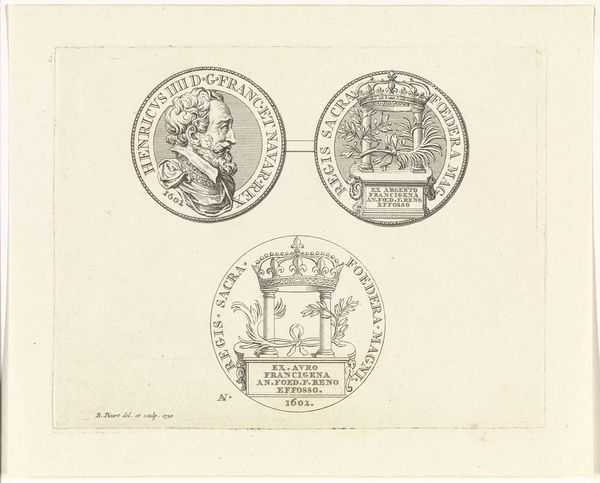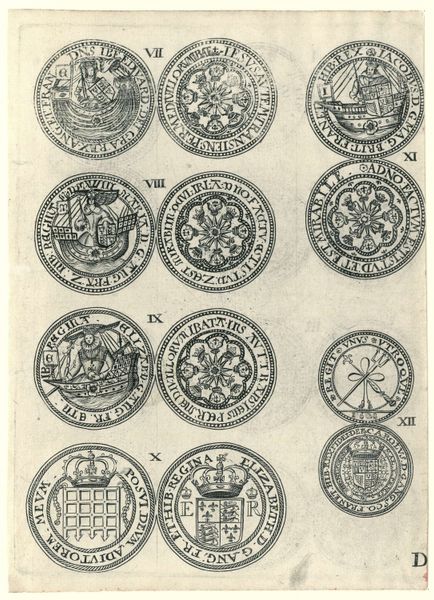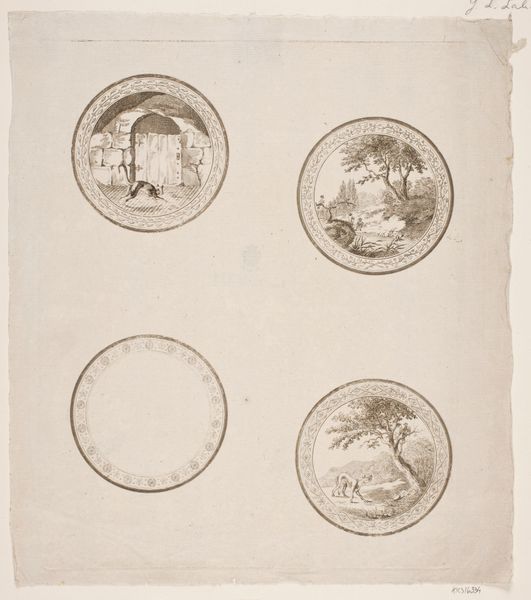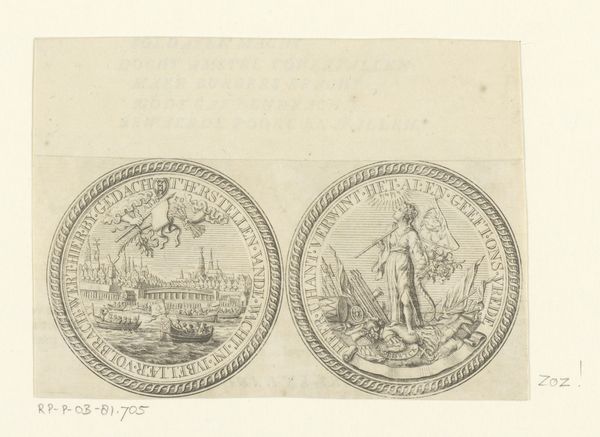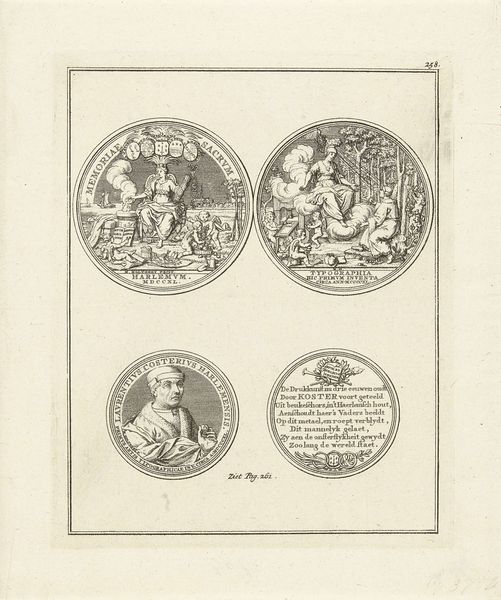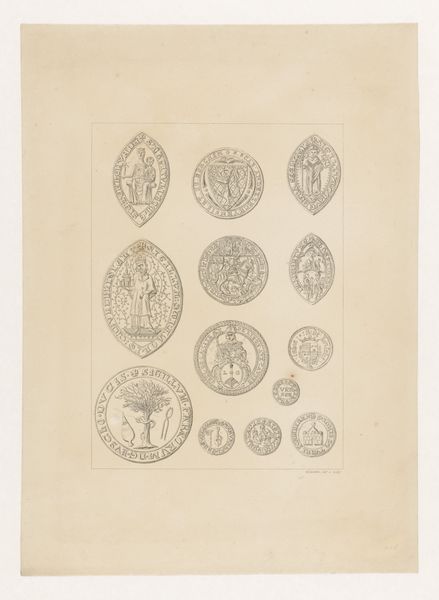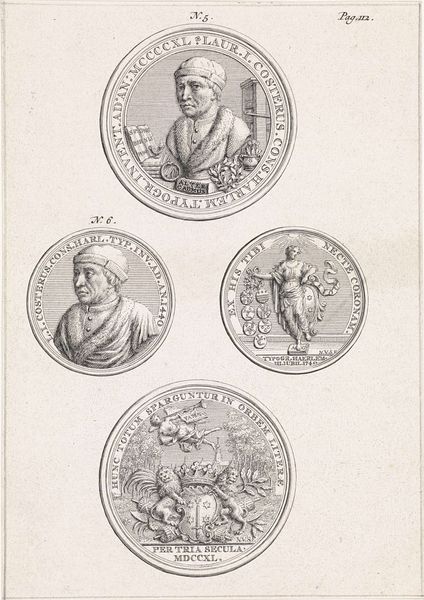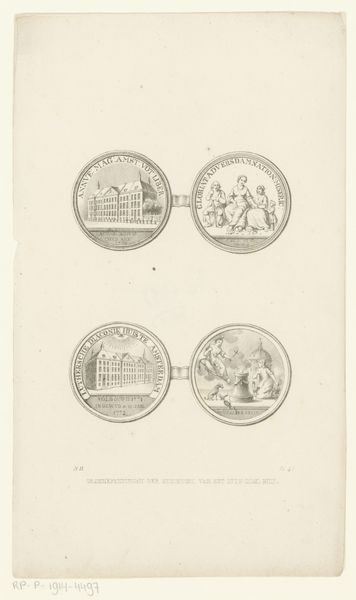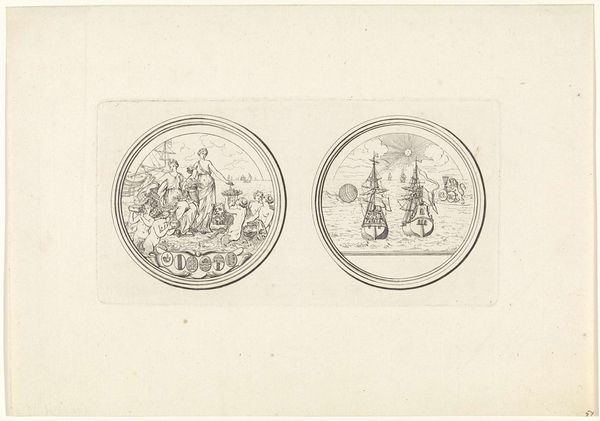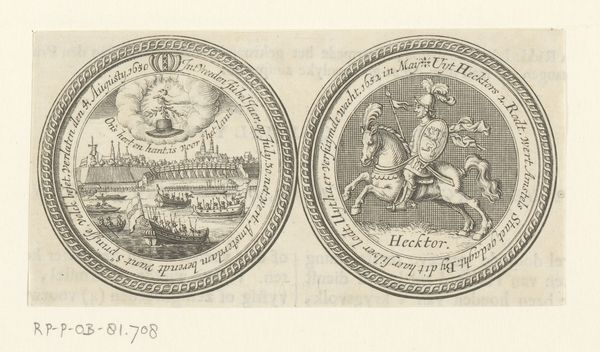
Vier penningen op het beleg van Amsterdam door Willem II, 1650 17th century
0:00
0:00
print, engraving
#
baroque
#
dutch-golden-age
# print
#
old engraving style
#
pen-ink sketch
#
pen work
#
sketchbook drawing
#
history-painting
#
engraving
#
calligraphy
Dimensions: height 290 mm, width 183 mm
Copyright: Rijks Museum: Open Domain
This sheet of paper shows eight designs for commemorative coins, all related to the siege of Amsterdam by Willem II in 1650. The coins are anonymous, but their creation involved considerable skill. Consider the labor involved: from the initial concept and design to the carving of dies used to strike the coins. Each stage required expertise, reflecting a complex division of labor typical of early modern capitalism. The material itself, likely silver, speaks to trade networks, and the coins would have served not only as historical records, but also as symbols of wealth and power. Looking closely, notice how the designs draw on classical imagery and allegorical figures. This was no accident; it helped to legitimize political authority through association with venerable traditions. The value of these designs lies not only in their aesthetic qualities, but in the insights they offer into the economic and social forces shaping 17th-century Dutch society. By paying attention to materials and the processes of production, we can begin to see how even the smallest of objects can illuminate larger historical trends.
Comments
No comments
Be the first to comment and join the conversation on the ultimate creative platform.
